It May Not Seem Like Much
Posted: January 25, 2015 Filed under: Environmental Issues | Tags: Benefits, Impacts, Motivation, openIDEO Challenge, RecycleBank, Recycling Leave a commentBelieve it or not, there are still people who do not recycle in America. It has been almost 25 years since the three Rs came to stand for “Reduce, Reuse and Recycle,” yet our society is still producing too much personal waste. Despite lots of “buzz”, as a society, we are still failing to realize how much of an environmental footprint we are leaving.
I am an avid recycler. How can I be involved in a business that makes use of resources that consumers turn in for recycling and not participate in the effort ? It would be inauthentic of me not to recycle. However, I recognize that what “motivates” me is not likely to motivate the average members of a household. I know that individual efforts don’t seem like much. I discovered that other thoughtful people are considering the question – How might we establish better recycling habits at home ?
In our home, we make recycling fairly easy for most of the family members. We wash everything before putting it the kitchen recycling container because we do not have curbside pick-up and must drive 20 miles in order to leave our recyclables at the county recycling center. We may only make that trip once in a month, so we don’t want residue spoiling in the basement in the meantime. We have a divided recycling container (not the one pictured but similarly large enough to reduce trips downstairs) that allows us to put potentially “wet” items (glass, plastic and metals) in a separate bin from “dry” items (paper). Our bin has a handle in the middle that allows us to carry both bins easily in one trip down to our basement where we have multiple aluminum standard size garbage cans. We then further separate our recyclables into more discrete categories – plastic, paper, metal, glass. We do put our chipboard (cereal boxes, etc) into a paper bag and we deal separately with corrugated cardboard (piling boxes into other boxes). We compost EVERYTHING organic.
The University of Exeter conducted a study to explore the role that recycling plays in everyday life through in depth research and conversations with families in Great Britain and France. They uncovered a series of insights on how we behave at home finding that:
•Recycling is rarely a conscious decision: we just go about our busy daily lives and recycling may or may not feature in our routines
•There are often tensions in the home between recycling champions and those who opt for the simplest route to disposing of waste – and aesthetics win out over environmental concerns
•There is often confusion and skepticism among householders about recycling, which can often lead to apathy
The openIDEO Challenge asked that question – “How might we establish better recycling habits at home?” and received over 200 creative ideas like the ones I have randomly selected below. The ideas I selected made it into the Final 25 but were not among the 8 ideas chosen as “Winners”. You can view the winning ideas here – openIDEO Challenge Winners.
Ideas I liked included this one was based on the question – “How much difference would one bottle make?” The common answer is “every bottle counts” but really how much does recycling only one bottle do? What if you knew exactly how much water, trees, electricity and CO2 you were saving by recycling that one bottle? This idea suggested an app called “Recyculator” – that could provide information on your personal recycling impact. The creator of that idea thought the app would scan the product’s barcode and then show the user those electricity, water, trees and CO2 savings as Environmental Impact statistics. Another app idea was named “From This to This” which intended to show the user what product their item could become if it were recycled rather than thrown away. I thought that this idea might help connect the user to the recycling process by showing this relevant information visually.
In doing research for this blog, I discovered an awesome website called RecycleBank that seeks to inspire and reward members. In some communities, RecycleBank members can actually earn points for recycling at home. RecycleBank makes that possible by working with municipalities and waste haulers. The organization also seeks to educate their members to make a positive impact towards a more sustainable future by learning how to make smarter choices everyday. They know that there is no single blueprint for a sustainable future, so they offer many ways for members to participate in being a collective force for change that makes a difference for us all.
I did a 5 image slideshow titled “The 4 Basic Recyclable Materials” and discovered that if the 10,000+ members of RecycleBank all recycled these items, one of the impacts would be 19,600 trees “saved”, still in the ground growing and recycling carbon for us all. I earned 25 points in just a few moments, with very little effort, and learned some new information as well, such as – an aluminum can goes from being recycled to back on the shelf as a new can in as little as 60 days or that paper can be recycled up to 7 times if it hasn’t been soiled by food waste.
What are some of the benefits of recycling ?
• Recycling protects and expands manufacturing jobs and local competitiveness.
• Recycling reduces the need for land-filling and incineration.
• Recycling prevents pollution caused by the manufacturing of products from virgin materials.
• Recycling saves energy.
• Recycling decreases emissions of greenhouse gases that contribute to global climate change.
• Recycling conserves natural resources such as timber, water, and minerals.
• Recycling helps sustain the environment for future generations.
Within the experiences that we have as a business that uses the resources that people turn in for recycling, we’ve noted that the economic stagnation now 7 years running, seems to have taken the “value” of using recycled materials off the table of decision makers in favor of the lowest cost. We know that cost IS important and that is why we do our best to keep costs as low as possible but the reality is that producing new construction materials from recycled feedstocks remains a low volume enterprise without the big economies of scale that could bring prices down lower. It also seems to us that a lot of people have “forgotten” about recycling in general. Perhaps they think it’s so mainstream now that their individual participation really doesn’t matter all that much. And even though it may seem like an individual effort is insignificant – it actually DOES add up. It’s easy enough to prove that’s true – just visit a landfill someday and see how much the cumulative waste of “individuals” has piled up !!
~ Information Resources
openIDEO Challenge – How might we establish better recycling habits at home ? – https://openideo.com/challenge/recycle-challenge/brief.html
The 3Rs and the 2 Words – What Is The Big Deal ? – http://web.utk.edu/~ckotara/English_255/What_Is_The_Big_Deal.html
Earn Points at RecycleBank – https://livegreen.recyclebank.com/earn
***
Blog author ~ Deborah Hart Yemm is co-founder of
Yemm & Hart, a green materials producer
***
Novel Approaches to Wind Energy
Posted: January 18, 2015 Filed under: Global Resources | Tags: China, Energy, Fracking, General Accounting Office, High-speed Rail, Low Gas Prices, Middle East, NewWind, Pope Francis, Russia, Shattuck Windmill Museum, T Boone Pickens, T-box, Texas, Wind Tree 3 CommentsI think that some of the most exciting developments in human evolution are in the realm of new and creative approaches to harnessing energy. Certainly, our dependence on fossil fuels – coal and petroleum – has done such damage to the environment of the planet that the sustainability of human life is uncertain. The new Pope Francis has taken the issue to heart saying “An economic system centred on the god of money needs to plunder nature to sustain the frenetic rhythm of consumption that is inherent to it. The system continues unchanged, since what dominates are the dynamics of an economy and a finance that are lacking in ethics.”
However, it may be that human ingenuity will yet come to our rescue.
I love trees !! So this unique approach to harvesting wind energy being developed by NewWind of France is reaching right down deeply into my environmentalist heart. Each tree like structure includes a hundred mini-windmills. I suspect that such trees will pose far less risk to birds than the gargantuan windmills that make up the wind farms.
Due to the light construction of the “leaves,” the Wind Tree generates power at wind speeds as low as 4.4 miles per hour! This translates into sustained operation times (an average of 320 days a year) that are almost double those of standard windmills that need higher wind speeds in order to produce electricity. Total output for the tree is about 3.1 kiloWatts. This is substantially below standard windmills, but they can’t operate on as many days due to higher wind thresholds.
The Wind Tree is made entirely of steel and, according to the manufacturer, it is completely silent while running. Each tree is about 36 feet tall and 26 feet wide, allowing it to reach above low obstacles like buildings and other smaller trees and have uninterrupted access to breezes at that level. They can either be plugged in to the public grid or used to power an individual building or complex.
Each tree costs about $36,500, but the payback will be fast. “Planting” them in “groves” may be the key to making the model work most cost effectively. NewWind is planning a test this March, with several units being installed in Paris.
Harnessing wind power really isn’t a new idea. The first grinding of grain harnessing wind power may have developed in Persia. Evidence of windmills in England dates from the 12th century. Wind was not the first non-human power source applied to the task of grinding corn – it was preceded by both animal power, and in all probability by water power. And of course, the Dutch are famous for employing their own unique style of windmill to pump water.
Our family unexpectedly discovered the Shattuck Windmill Museum and Park while traveling through Oklahoma to share Thanksgiving Dinner with family. This little museum was established in 1994 by a gathering of old windmillers. By January 2013 there were 62 diverse examples of windmills standing in the park with no two exactly alike. Beyond displaying these historic structures the park also shows visitors how homesteaders lived and why the windmill was so important to their survival. The park is located at the junction of US Highway 283 and OK State Highway 15.
Wind is the movement of air from an area of high pressure to an area of low pressure. In fact, wind exists because the sun unevenly heats the surface of the Earth. As hot air rises, cooler air moves in to fill the void. As long as the sun shines, the wind will blow. And as long as the wind blows, people will harness it to power their lives.
Wind is a clean source of renewable energy that produces no air or water pollution. And since the wind is free, operational costs are nearly zero once a turbine is erected. Mass production and technology advances are making turbines cheaper, and many governments offer tax incentives to spur wind-energy development.
Some people think wind turbines are ugly and complain about the noise the machines make. The slowly rotating blades can also kill birds and bats, but not nearly as many as cars, power lines, and high-rise buildings do. The wind is also variable: If it’s not blowing, there’s no electricity generated.
During our travels of the blue highways of the back roads we encountered the biggest wind farm we had ever seen in Texas. It turned out to be a project promoted by T Boone Pickens. He bought 500 turbines from GE to build the farm. But then the recession hit hard in late 2008, the Texas wind farm struggled to get the proper transmission lines permitted, and natural gas started on its downward spiral in price, making clean power less attractive to investors.
I’m not complaining about the incredibly low gas prices we are all experiencing currently in the United States. Some of that is driven by excess supply generated by the fracking boom and I suspect some of this has to do with geopolitics influenced by both the Middle East and Russia but I wonder if humanity is being short-sighted about the long-term costs. A General Accounting Office report noted that “shale oil and gas development poses risks to air quality, generally as the result of (1) engine exhaust from increased truck traffic, (2) emissions from diesel-powered pumps used to power equipment, (3) gas that is flared (burned) or vented (released directly into the atmosphere) for operational reasons, and (4) unintentional emissions of pollutants from faulty equipment or impoundment-temporary storage areas”.
But back to novel approaches to harnessing wind energy, how about the winds that blazing-fast trains create (and mechanical forces and energy beyond that including the heat of stations, train car interiors and even the sweat of passengers) ? Around the world, small-scale projects are starting to find innovative ways to harness all this energy. Passengers waiting for a train on the platform are accustomed to the whoosh of wind when their train arrives. Making use of China’s high-speed rail network, designers Jiang Qian and Alessandro Leonetti Luparini have created a prototype of a small power generator called the T-box to make use of those gusts.
Knowing that all “good” things (a relative term if ever there was one) pass, I remain optimistic about human creativity and all of the ways that humanity is going to find to access energy that we never considered as a resource and have either been wasting the potential of or failing to harness the presence of – like wind which is as constant as the sun shining somewhere on this planet every minute of every day.
~ Information Resources
Pope Francis’s edict on climate change will anger deniers and US churches – http://www.theguardian.com/world/2014/dec/27/pope-francis-edict-climate-change-us-rightwing
NewWind Wind Trees – http://greenbuildingelements.com/2015/01/12/wind-tree-provides-silent-wind-power-beautifully/
History of Windmills – http://www.windmillworld.com/windmills/history.htm
Shattuck Windmill Museum – http://www.shattuckwindmillmuseum.org/
Wind Power Information – http://environment.nationalgeographic.com/environment/global-warming/wind-power-profile/
T Boone’s wind farm plans finally blow away – https://gigaom.com/2012/10/15/t-boones-wind-farm-plans-finally-blow-away/
How Has Fracking Changed Our Future ? – http://environment.nationalgeographic.com/environment/energy/great-energy-challenge/big-energy-question/how-has-fracking-changed-our-future/
6 Ways to Harness the Wasted Energy of Trains (and Their Passengers) – http://www.popularmechanics.com/science/energy/efficiency/6-ways-to-harness-wasted-transit-energy#slide-5
***
Blog author ~ Deborah Hart Yemm is co-founder of
Yemm & Hart, a green materials producer
***
Squeezed Out ?
Posted: January 11, 2015 Filed under: Environmental Movements | Tags: 1973 Oil Crisis, Alternative Energy, Energy Conservation, Health Product Declarations, Leadership in Energy and Environmental Design, LEED, OPEC, Sick Building Syndrome, Solar, US Green Building Council, Wind Leave a commentI’ve been taking a bit of a break from my weekly blogs here. There was an unexpected but necessary trip to spend Thanksgiving with my aging parents, followed by the need to prepare a traditional kind of Christmas for my children. The week day placement of the year-end seasonal holidays this year were not totally conducive to business interests in general but were highly supportive to taking a bit of time to focus on family and rest once the 25th had passed. It’s been difficult to get back into the routine even with January arriving as my intentions last Sunday to resume my blog were waylaid by considerations for this year’s tree plantings on our farm by a visit to a highly experienced tree planting couple in another county.
This year begins with our attention once again on the issues facing our business due to an increasing acceptance of information known as Health Product Declarations. I have previously written about these efforts in this very blog. However, today I feel that some history – both regarding our businesses materials and this movement – is probably useful for me to share with you.
I remember the 1973 oil crisis as I was recently both graduated from high school and trying to live independently of the parents who raised me as a newly wed. In October of 1973 OPEC proclaimed an oil embargo that endured until March 1974. OPEC started the embargo in response to American involvement in the 1973 Yom Kippur War. Six days after Egypt and Syria launched a surprise military campaign against Israel to regain territories lost in the June 1967 Six-Day War, the US supplied Israel with arms. In response to this, OPEC announced an oil embargo against Canada, Japan, the Netherlands, the United Kingdom and the US. In the aftermath, the United States initiated a wide variety of policies to contain their future dependency on imported oil.
Living on minimal income, I remember prices at the grocery store changing weekly and the impact on the price increasing and availability/rationing of gasoline. A focus on conservation and strategies to reduce demand began to have effects on everyday life. In 1974, a national maximum speed limit of 55 mph was imposed through the Emergency Highway Energy Conservation Act. Year-round daylight saving time was implemented from January 6, 1974 to February 23, 1975. In 1976, Congress created the Weatherization Assistance Program to help low-income homeowners and renters reduce their demand for heating and cooling through better insulation. The energy crisis led to a greater interest in renewable energy and spurred research in solar power and wind power.
There has been no going back to less awareness when it comes to aspects of energy use in our country ever since. I believe the history that I have shared is the background to the establishment of The US Green Building Council in 1993 whose mission it has been to make cost-efficient, energy-saving green buildings a more common reality. In March 2000, the first LEED (Leadership in Energy and Environmental Design) certification system was unveiled. The program has been very successful in educating the architectural and interior design communities and in creating very energy-efficient buildings. Yet, there is a downside even to such desirable success – Sick Building Syndrome.
Governmental health experts admit that there is no specific identifiable cause but a reduction in air flow due to tighter buildings is certainly one explanation. Architects and interior designers sensing some personal responsibility for a higher incidence of malaise related to their success have turned their attention now to making certain that the interiors of buildings become “healthier”. This is the impetus behind Health Product Declarations.
Therefore, the industry now has a Health Product Declaration Collaborative. Yemm & Hart wholeheartedly supports the intentions behind this for transparency, openness and innovation in the product supply chain. The Health Product Declaration is meant to be an impartial tool for the accurate reporting of product contents and each ingredient’s relationship to the bigger picture of human and ecological health. It is an admirable goal.
However, we are finding the application of this to be far from impartial. We are experiencing coercion from OEMs (Original Equipment Manufacturers) who utilize our materials in their product and from the Architectural and Design firms that we have depended upon to specify our product in building construction projects. We feel that while we completely understand and support the reasons for this development, it feels to us as though it will squeeze out all of the initiatives have have developed along with a greater awareness of human impacts upon the planetary environment that have led to the emergence of quality products with post-consumer recycled material content.
Our business has always prided itself on accurately portraying the content of our materials and an admirable transparency and openness regarding them. Yet, there are realities that we have very little influence over. It is well known that there has been conflict between the chemical industry representatives and those developing the latest LEED v4 standards over this issue of transparency. Industry chooses to hide – whether we should be concerned about the health implications or whether the assertions are valid – behind the idea that their formulations include “proprietary” ingredients.
In attempting to honor requests that we are receiving to provide Health Product Declaration information, we have come up against that thick wall of non-disclosure from our color concentrate suppliers. Making jest at a serious issue we wonder if the “proprietary dust” listed in the components is considered safe by the chemical industry and therefore of no concern or does it hide “lead infused radioactive asbestos” dust ? Not that we believe the latter but how is one to know ?
That is precisely the quandary of those who choose the products and materials used in building construction which a significant number of human beings spend a significant amount of their lives enclosed within. We understand but as a very small, niche business we lack the influence to force disclosure by our suppliers who are reputable companies that supply most of the color pigments for most of the plastic objects made in the USA.
This is an even older, long standing issue we have had to grapple with since the founding of our business. That is the nature of post-consumer feedstocks in general. There can be no HPD for post-consumer recycled resin because these containers represent a variable waste stream with a diversity of unknowns. It is not possible to know what type of liquid or granular material was contained in the original polyethylene vessel. Testing every container before it is recycled would not be a practical solution.
The recycled polyethylene resin that we use has been subjected to cleaning in a hot water washing process. The cleaned resin is then pelletized by liquefying it to temperatures between 250° and 300° F., filtering it and then forming it into pellets. These processes do not necessarily completely nullify the potential for some residual chemicals to remain microscopically present. It is because of this potential type of contamination that Yemm & Hart uses for their Origins product post-consumer milk jugs to avoid potential complications of chemical content residue or plastic additives. Knowing that this recycled resin once contained the nation’s milk supply makes its use feel safer to us.
We see the current effort for building products to have HPDs as a beginning. It is going to take research and legislation to ever achieve complete transparency from industry. Those at the forefront of the HPD movement want a little bit healthier interior environment in a world that has all of us inhaling mercury from coal burning power plants, radon from deteriorating uranium deep below us and an incredible array of chemicals all around us including in the food we eat.
Yemm & Hart will continue to remain informed about the progress of this effort. It is our hope that eventually we will find it easier to comply with requests related to the HPD movement and thus provide to the A&D community an even more transparent disclosure regarding the composition of our materials than we are able to do today. From our beginning, we have done our best to present our material in the most accurate manner possible. Even so, at the moment the general trend has us feeling a bit squeezed out of the market by the best of intentions.
~ Information Resources
1973 oil crisis – http://en.wikipedia.org/wiki/1973_oil_crisis
USGBC History – http://www.usgbc.org/about/history
Sick building syndrome – http://www.nhs.uk/Conditions/sick-building-syndrome/Pages/introduction.aspx
Health Product Declaration Collaborative – http://hpdcollaborative.org/
***
Blog author ~ Deborah Hart Yemm is co-founder of
Yemm & Hart, a green materials producer
***


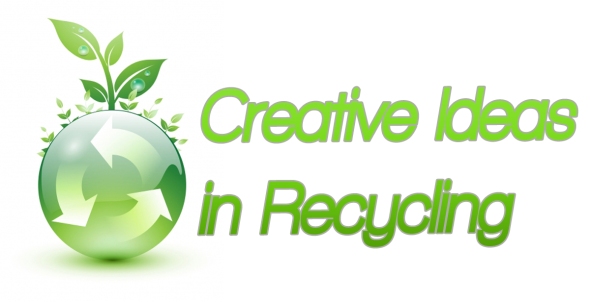

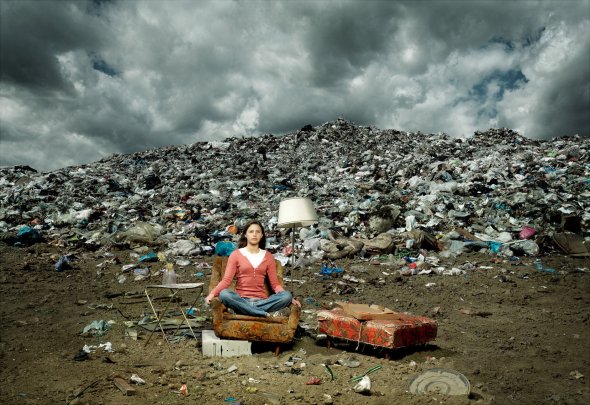


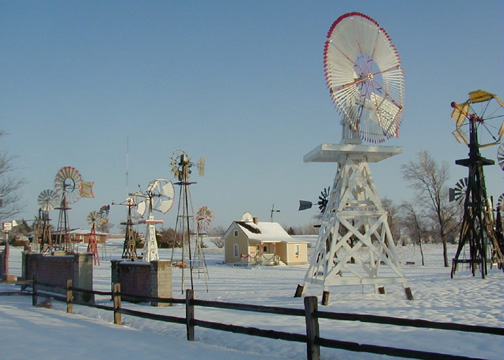
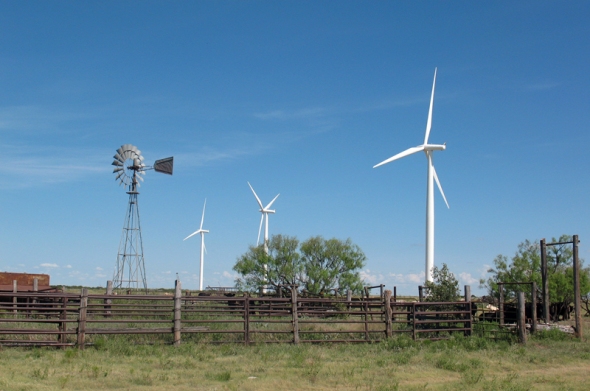


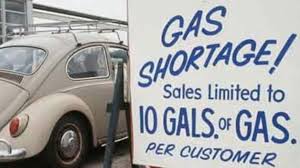



Recent Comments